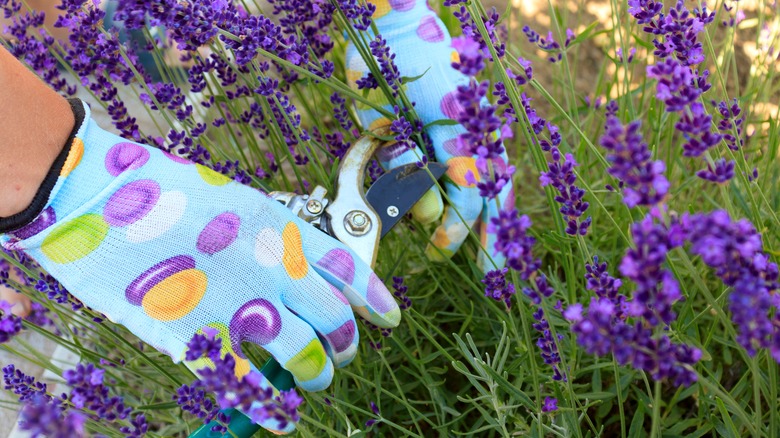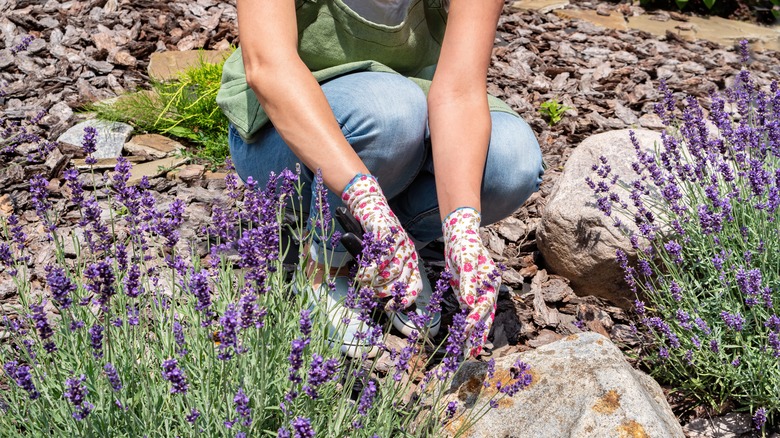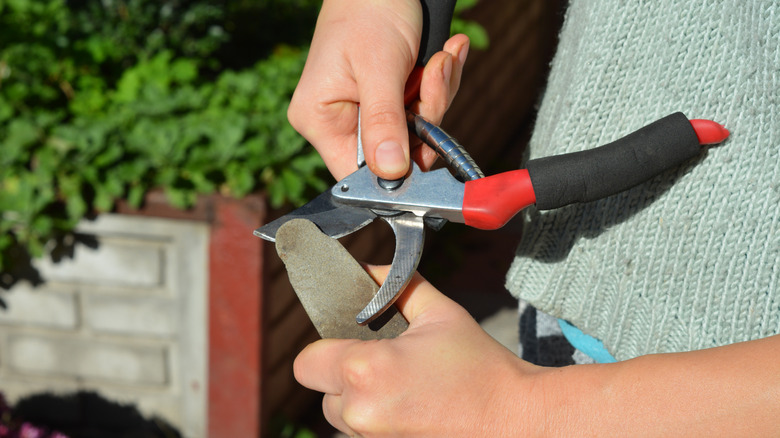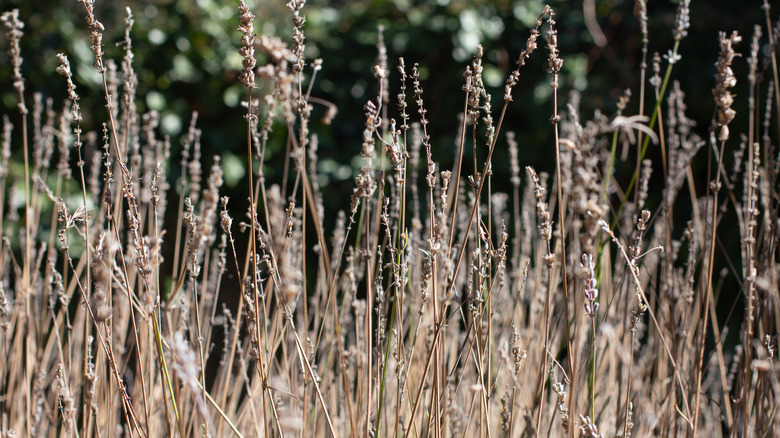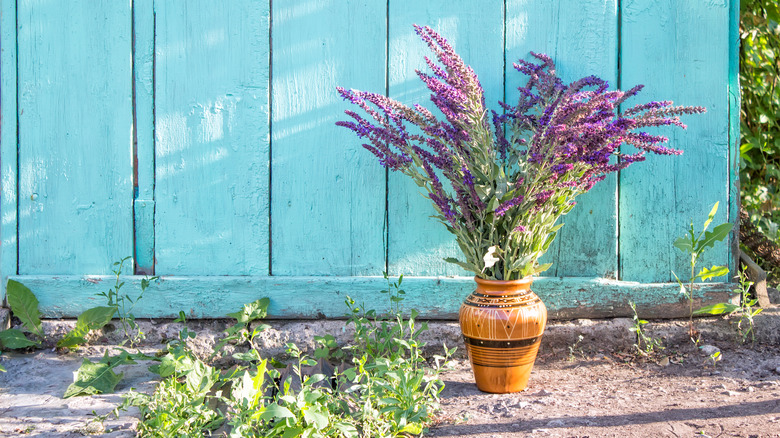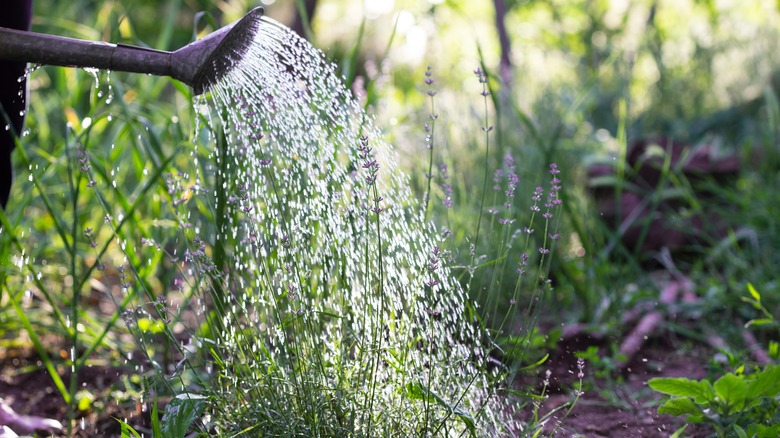Mistakes To Avoid When Pruning Lavender
Pruning lavender is a critical horticultural practice that lies at the heart of cultivating a thriving lavender garden. With its beautiful fragrance and versatility, lavender has charmed gardeners and enthusiasts for centuries, making it a prized addition to any landscape. However, the art of pruning this beloved plant goes beyond merely snipping away overgrown foliage. Proper pruning techniques are essential to maintain the plant's health, vigor, and longevity, ensuring a bountiful display of fragrant blooms year after year.
This practice serves several vital purposes. Firstly, it promotes the growth of new shoots and encourages bushier, more compact growth, making the plant visually appealing. Secondly, regular pruning helps maintain the plant's shape, preventing it from becoming straggly and untidy. Additionally, by removing spent flower stems, pruning prolongs the blooming period and ensures the lavender's peak performance throughout the growideang season.
To embark on a successful lavender pruning journey, gardeners must be aware of the potential mistakes that can hinder the plant's well-being. Throughout this article, we will explore some common errors that gardeners often make when pruning lavender and provide valuable insights into how to avoid them. Armed with this knowledge, you will be equipped to maintain a healthy, lush, and picturesque lavender garden that will delight your senses and captivate visitors with its timeless beauty.
Pruning at the wrong time
Timing is paramount when it comes to lavender pruning. Pruning at the wrong time of the year can have detrimental effects on the plant's growth and overall health. Lavender should be pruned at the appropriate time to encourage vigorous growth and abundant flowering. Avoid pruning in late fall or winter when the plant is dormant, as this can weaken the lavender and make it susceptible to cold damage. Similarly, pruning too early in the season, especially before the last frost, can expose new growth to potential frost damage, stunting its development.
The best time to prune lavender is either late summer, or in spring, just when green growth returns after winter, but before new buds begin to appear. At this point, the plant is actively growing, and pruning stimulates the growth of new shoots and enhances branching, resulting in a denser and more attractive appearance. Proper timing ensures that the lavender has sufficient time to produce new growth well before the onset of winter, thereby increasing its chances of surviving the colder months and thriving the following year.
Neglecting proper tools and techniques
Pruning lavender requires using the right tools and techniques to ensure the best outcome for the plant. Not using proper tools or employing incorrect methods can lead to poor results, such as uneven cuts, torn stems, and increased stress on the plant. To achieve clean and precise cuts, it is essential to use sharp and clean pruning shears or secateurs. Dull blades can crush the stems, making it harder for the plant to heal and increasing the risk of disease or infection. Additionally, when pruning lavender, always make cuts just above a set of healthy leaves or leaf nodes. This approach encourages new growth and prevents unsightly bare stems from forming.
Maintaining cleanliness is equally crucial. Before pruning, sterilize your tools with rubbing alcohol or a bleach solution to minimize the potential spread of pathogens. After each cut, wipe the blades clean to prevent the transmission of diseases. Adhering to proper pruning techniques and employing the right tools ensures that your lavender pruning endeavors will yield the best possible results for a healthy and thriving lavender plant.
Over-pruning and under-pruning pitfalls
Achieving the right balance between over-pruning and under-pruning is a delicate dance that gardeners must master. Both extremes can negatively affect the lavender plant's health and overall appearance. Over-pruning, where too much foliage is removed, can weaken the plant and impede its photosynthesize process, which is essential for its growth and energy production. This can lead to stunted growth, diminished flowering, and an overall unhealthy and unattractive appearance. Additionally, excessively cutting into old wood can be especially harmful, as lavender cannot regenerate from dead stems. Conversely, under-pruning can result in a sparse, unkempt appearance, with uneven growth and fewer flowers. Neglecting to prune the lavender at all can lead to the plant becoming woody, diminishing its ornamental value.
The key to successful pruning lies in balancing the two extremes. When pruning lavender, aim to remove about 1/3 of the plant's growth, shaping it into a compact and bushy form while preserving its natural form and structure. Regular and moderate pruning will stimulate fresh growth, encourage flower production, and ensure the plant's overall health and attractiveness.
Ignoring sunlight and air circulation
Lavender thrives in sunny and well-ventilated environments, and neglecting these key elements during pruning can have adverse effects on the plant's well-being. When pruning lavender, it is essential to consider sunlight penetration into the plant's interior. Ensure that the lavender plant receives adequate sunlight exposure throughout its foliage. This can be achieved by carefully removing excess foliage or woody growth that may be blocking sunlight from reaching all parts of the plant. Good sunlight exposure, ideally a minimum of six hours a day, helps maintain a healthy, vibrant appearance and encourages robust flowering.
Similarly, air circulation is crucial for preventing the development of fungal diseases, such as powdery mildew. Lavender plants need sufficient airflow around their leaves to reduce humidity and moisture buildup, which can contribute to the growth of fungi. When pruning, focus on opening up the plant's interior by carefully removing crowded or crossing branches, but avoid cutting any woody branches. This allows air to circulate freely, reducing the risk of fungal issues and promoting overall plant health.
Neglecting after-pruning care
Pruning lavender doesn't end with the last snip of the shears; after-pruning care is equally crucial to ensure the plant's successful recovery and continued growth. One essential aspect of after-pruning care is proper hydration. Lavender plants require sufficient water after pruning to aid in their recovery. However, it's important to strike a balance and avoid overwatering, as lavender dislikes waterlogged soil. Instead, provide deep but infrequent watering sessions to encourage the development of a robust root system. Fertilizing immediately after pruning should be avoided, as the plant needs time to adjust and focus on regrowth. Wait for a few weeks after pruning before applying a balanced, low-nitrogen fertilizer to provide the lavender with essential nutrients.
Regular monitoring for pests and diseases is also critical to keeping your plant healthy, and pruning is an excellent time to have a quick check. Keep an eye out for any signs of pest infestations or disease symptoms and take appropriate action promptly to mitigate their impact on the plant's health and vitality. By paying attention to after-pruning care, gardeners can ensure that their lavender plants bounce back quickly, producing abundant blooms and remaining a delightful centerpiece in their garden for many seasons to come.
